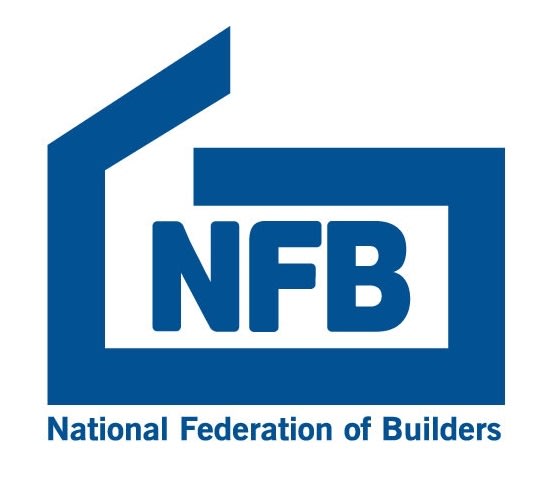Bridging the 15mm gap between clients and construction

Looking back at 2023, two Constructing Excellence publications – ‘The enlightened client’s journey to project quality and compliance’ and ‘The Client Advisor Guide’ – reaffirmed the importance of clients, the key role they play in the success or otherwise of project outcomes, their heterogenous nature, and complexity.
‘The Client Advisor Guide’ reminded us that clients often have difficulty in formulating and articulating their building needs, and that they are not always sufficiently well informed about how to conduct the project they have in mind because they are not directly part of the construction sector. This means our clients and their desired outcomes are, understandably, often challenging for client advisors and construction teams to fathom and understand.
After all, they are the “customer” at the end of an often long and complex supply chain, which doesn’t end there, as beyond them are the users or occupiers of the building. And here’s another factor adding to client complexity: The influence exerted by other powerful project stakeholders, with different, sometimes conflicting. views on how to conduct a project.
This month Martyn Jones argues that clients, their centrality, their complexity, and their often inexperience of construction has once again been brought into even more focus in the aftermath of the Grenfell tragedy, the implementation of the Building Safety Act (2022), and the need to remove and replace combustible cladding to occupied high-risk apartment buildings.
Here, the “client” organisation can be even trickier than normal to unpick and understand. This means designers, project managers and constructors in remediating cladding must work even harder to bridge the gap with the “client”, make sense of its organisation, and establish who is the “Employer” mandating the project.
And to look beyond the commissioning client to the other highly influential stakeholders such as building owners, developers, managing and property agents, or residents with management responsibilities under Right to Manage (RTM) or Resident Management Companies (RMC).
RTM, under the Commonhold and Leasehold Reform Act 2002, provides the opportunity for flat owners to run their own affairs and to make their own decisions about the management and upkeep of their flats and common areas, including insurance, repairs, service charges etc.
An RMC is created when a developer completes the building and wants to hand over management control to the leaseholders by setting up a company to manage communal areas including corridors, hallways, staircases, roofs and so on. Both RTM and RMC are seen as fairer solutions to managing apartment blocks but both come with significant responsibilities for residents.
But most residents lack property management expertise and so RMTs and RMCs often employ managing property companies, adding yet another player in the “client’s” complex setup, who along with residents, find themselves post-Grenfell being unexpectedly thrust into the role of construction client or “Employer” for major multi-million-pound remediation projects.
There are new roles too: Under the Building Safety Act 2022, Accountable Persons (APs) and the Principal Accountable Person (PAP) have roles and duties in managing the fire and structural safety risks of high-risk residential buildings. Responsibilities include registering their building, assembling a safety case, and assessing and managing the risks posed to people in and about their building from structural failure or the spread of fire in the parts of the building for which they are responsible.
High-rise apartment blocks house diverse communities of residents. Ensuring the wellbeing of this cross section of society from young to old, from fit to infirm, with a wide range of needs, presents a major issue for contractors as they work cheek by jowl with residents, over many months, and having to deal with noise, dust, and other hazards.
So, where does the 15mm come from? Well, operatives and their supervisors need to work just millimetres away – often the thickness of the internal plasterboard lining – away from residents. This requires working empathy and appropriate behaviours particularly given that most residents will be already be to some extent feeling vulnerable.
They will have experienced significant trauma (including, according to research from Sheffield University, stress, depression, suicidal feelings, and PTSD) from living for months and often years in buildings deemed to be high risk. And for the owners of flats there is financial uncertainty to factor in too as the value of their investment falls, in many cases to zero as their flats are deemed to be unsellable.
Thankfully help is here: We now have a government Code of Practice for the Remediation of Residential Buildings, which the government expects everyone to follow. It places residents’ needs at the heart of all remediation, setting clear expectations of those commissioning, undertaking, and managing remediation projects.
Alongside this we have the longstanding Considerate Constructors’ Scheme and its Code of Considerate Practice. Although not yet specifically including residents of high-risk buildings it embodies the high standards the industry can and should achieve in caring for the environment and valuing the workforce, but in this context respecting the community.
But as argued earlier, the complexity of the “client’s” internal team needs to be addressed too. Here an agreed organisational structure with a clear statement of roles and responsibilities is vital. And there needs to be clear channels between the parties for the flow of information, the reporting of progress, and the reassurance to residents guaranteeing the final performance of the new cladding.
These provide a basis for empathetic discussions between the “client” and remediation teams on communication and the planning and execution of the works. But further best practice guidance is needed.
















